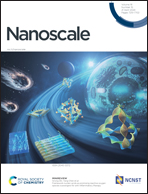First-principles study of the oxidation susceptibility of WS2, WSe2, and WTe2 monolayers†
Abstract
The environmental stability of two-dimensional (2D) transition metal dichalcogenide monolayers is of great importance for their applications in electronic, photonic, and energy storage devices. In this study, we focus on understanding the susceptibility of WS2, WSe2, and WTe2 monolayers to oxygen exposure in the form of atomic oxygen and O2 and O3 molecules, respectively. Calculations based on the van der Waals-corrected density functional theory predicted that O2 and O3 molecules are weakly adsorbed on these monolayers, although atomic oxygen prefers chemisorption accompanied by a significant charge transfer from the surface to oxygen. In the physisorbed molecular configurations consisting of O2 and O3, the partially oxidized monolayers retain their geometrical and electronic structures. The calculated transition path as the oxygen approaches the surface shows a high-energy barrier for all cases, thus explaining the photo-induced formation of the oxidized configurations in the experiments. Furthermore, oxidizing the WS2 monolayer is predicted to modify its electronic structure, reducing the band gap with increasing oxygen coverage on the surface. Overall, the calculated results predict the resilience of WS2, WSe2, and WTe2 monolayers against oxygen exposure, thus ensuring stability for devices fabricated with these monolayers.

- This article is part of the themed collection: Celebrating the 10th anniversary of INST Mohali


 Please wait while we load your content...
Please wait while we load your content...